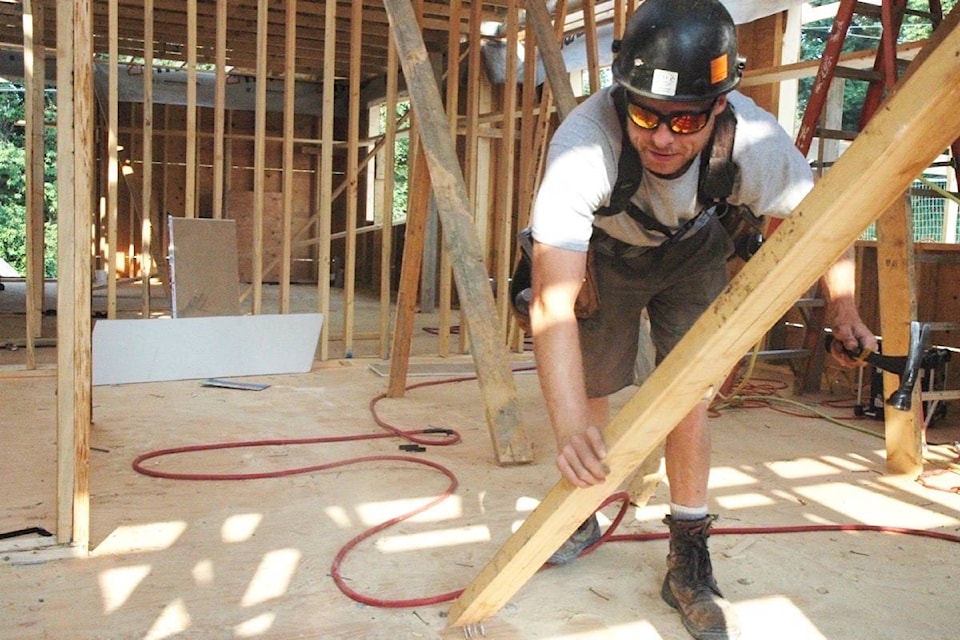Developers in Abbotsford may soon find it more expensive to build houses. And Churches and public institutions like the University of the Fraser Valley, Fraser Health and the local school board could also be looking at large cost increases for any future buildings they may hope to erect in the city.
For the first time in a decade, the City of Abbotsford is planning to revise development cost charges (DCCs) it levies on builders.
The money from those charges goes towards building new infrastructure that is required to support a growing city with more people. Since the city’s DCCs were last revised in 2010, construction and land costs have increased dramatically, and the city has adopted a new Official Community Plan that emphasizes the need for a denser, more-efficient city.
Draft DCCs unveiled this month for two city committees look set to further incentivize the building of denser forms of housing. While costs would rise for builders of detached homes, they would drop for apartment units.
Under the draft rates, which must still be approved by council, the cost for the average single-family dwelling unit would rise by more than 20 per cent, from $31,225 to $38,114. (The precise shift will depend on where exactly the home is built, because current DCCs are set according to a home’s “density band.” The new charge would be a flat rate for all single-family homes.) DCCs don’t apply when a house is demolished and simply rebuilt.
Last week, Anita Chambers – one of the consultants who helped develop the proposal – told the city’s agriculture committee that the increase is to be expected, given how long it has been since the charges were last changed.
“It’s been a decade since DCC rates were last updated, so even just taking into account inflation, these rates would rise by 20 per cent or more.”
Organizations that represent builders have argued that DCCs drive up the cost of housing and rent for residents and businesses. Chambers, though, said research suggests, “It’s widely held that DCCs affect the price of raw land … and we don’t see this affect the price of the house itself.”
“We don’t see municipalities with lower DCCs with lower house prices,” she said.
Instead, Chambers said developers take DCCs into consideration when they bid for developable land. Higher DCCs, she said, can drive down the raw cost of land. Home prices, though, she said are set by the market and supply and demand for housing.
Under Abbotsford’s proposed new charges, denser (and thus more efficient to service) forms of building will see lower DCC charges.
Duplex DCCs are proposed to increase by 10 per cent to $23,804, while townhouse rates are proposed to remain mostly level, at $18,635. Apartment rates are proposed to drop by 10 per cent, from $13,210 per unit to $11,949. That would save a developer of a 40-unit apartment building about $50,000.
Abbotsford’s increased single-family DCCs would remain above those in Mission, Chilliwack and Maple Ridge, but below those in Surrey, Coquitlam and Langley Township, Chambers noted.
Its apartment and townhouse DCCs would be lower than all those neighbouring communities, except Mission.
The single biggest increases are proposed for the “institutional” and “general agriculture” property classes. Institutional developments include churches and buildings constructed by governmental organizations – including university, school, supportive housing and health care buildings.
The assembly area of a church is exempt from DCC charges, but fees apply to all other attached areas in such a building.
The proposal would more than triple DCCs for such buildings, increasing them from $51.66 per square metre to $193.42. That would increase the city’s take on every 10,000 square feet of institutional building from about $48,000 to around $180,000.
If that DCC rate were in place prior to the start of construction on Abbotsford’s new 16,000-square-metre-plus courthouse, the city would have collected upwards of $3 million in DCCs. As it was, the city collected just shy of $800,000.
The proposed changes would bring Abbotsford from having one of the lowest institutional DCC charges in the region, to having the highest outside of Mission’s Cedar Valley area.
The suggested changes come after the provincial government told municipalities that they won’t be able to use money collected from DCCs to help finance their share of highway interchanges.
Increasing institutional DCCs would leave the province among those paying more money into the city’s coffers. Most of that institutional DCC money would be slated for improvements to the city’s roads, ostensibly to make up for the extra traffic brought by the new buildings.
RELATED: Cities shouldn’t be on hook for highway interchanges they don’t own, Abbotsford mayor says
Chambers said the rates need to be altered because over the past decades, the city’s needs – and the impact of development – have changed.
In particular, land costs have increased by as much as 180 per cent, while construction costs have risen by between 20 and 30 per cent.
The differences between different classes – from industrial to residential and beyond – relate to the burdens those types of buildings place on the city’s water, sewer, road and other infrastructure.
Municipalities are only allowed to use money from DCCs to pay for infrastructure that is needed to “support growth.” That can include things like new sewer, water and road infrastructure, along with the purchases of parkland to give new residents places to play.
On Sept. 10, the city’s agriculture committee discussed the suggested changes. On Sept. 17, the city’s development-focused committee will take a crack at the issue. Any changes to DCC rates will eventually go to council for approval.
Do you have something to add to this story, or something else we should report on? Email:
tolsen@abbynews.com
